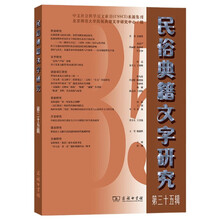Chapter 1 Introduction
1.1 The Object of the Study
In daily communication, interactants not only convey information but also construct their identities (Lakoff, 1989). This book argues that speakers construct or deconstruct, project or hide, affirm or negate, their own or others’ identities in interaction for various purposes. de Fina, Schiffrin and Bamberg (2006a) state that identity construction has become the research target of many disciplines such as critical discourse analysis (Fairclough, 1989), social psychology (Tajfel & Turner, 1986) and pragmatics (van de Mieroop, 2007).
Although identity has been taken as a research topic in various fields, its definition is always a tricky issue upon which no consensus has been reached yet. From the sociological perspective, Goffman (1974: 7) posits that role is an aspect of personal identity. In the pragmatics tradition, many scholars approach identity from its relation to face or role: Ting-Toomey (1994: 3) argues that face is an identity-boundary issue; Scollon and Scollon (1995: 34-36) discuss face in terms of the interpersonal identity of individuals in communication and the self as a communicative identity; Thornborrow (2001) regards identity as a person’s social role. Along this line, Spencer-Oatey (2007) proposes that in cognitive terms, face and identity are similar in that both relate to the notion of self-image (including individual, relational and collective construals of self), and both comprise multiple self-aspects or attributes.
Following Spencer-Oatey’s (2007) definition, this book defines the term “identity” as a person’s self-image, consisting of multiple attributes, such as their individual ability, personality traits, language affiliation, ideology, social role and group membership. In this vein, the term “professional identity” here is defined as one’s professional image, comprising such attributes as professional role, professional competence and professional ethics.
Although considerable research (Spencer-Oatey, 2007; Garcés-Conejos Blitvich, 2009, 2010a, 2013, among others) has already been devoted to exploring the explicit linguistic means and strategies of constructing self- or other-identity, rather less attention has been paid to the implicit means and strategies of (de)constructing self- or other-identity. This book attempts to reveal the implicit means and strategies of constructing self-professional identity.
The specific target of this book is professional identity construction through implicit negation. Implicit negation here is defined as a pragmatic strategy by which speakers negate their interlocutor’s non-propositional content—stance or identity. Moreover, this indirect strategy is realized in the form of indirect utterances. These indirect utterances may carry (simultaneously) multiple pragmatic forces or functions and be ambiguous to the speaker’s meaning or intention. Thus, the implicit negation in this book can be considered as a kind of “strategic ambiguity” (Archer, 2011).
The implicitness or indirectness of negation can be generated by the speaker’s flouting of Grice’s (1968) maxim(s) of the Cooperative Principle. As such, Grice’s maxims are applied as an analytic tool for generating the implicature of implicit negation. For instance:
Example (1)
The situational context: The topic is whether the Rich Second Generation can become the Kind Second Generation. Here the Rich Second Generation refers to the daughter of the manager of China-Africa Project Hope (G1) who has his own company. They, the daughter and the manager, are the heads of the charitable foundation. Being questioned by the guests and the audience members, G1 is offering the evidence for doing charity work both in China and Africa.
01G1: 我两个春节都是在做慈善, 一个 (春节) 是 (为了) 汶川地震 (灾后重建), (另) 一个春节我在非洲考察, 做慈善, 你们做什么呢春节?
02G2: 但是做慈善, 在今天慈善受到质疑的年代, 慈善无国界, 慈善家似乎应该有国界, 为什么这么讲呢?我来举两个著名慈善家 (的例子, 他们) 都比你们两个厉害, 一个是荷兰的修女 ((省略))。(另) 一个叫比尔 盖茨, 也是做生意的, 为什么呢?比尔 盖茨做生意的时候人家生意归生意, 人家那个不叫做慈善, 人家叫肩负社会责任。((省略)) 这两个 (人) 是真正的慈善 (家)。现在盝老师呢, 处在一个转型阶段, 我比较理解他, 因为制度不完善, 他承受了巨大的压力, 但是呢 ( N), 他确实是给人造成了一个印象, 什么印象呢 =?就是, <MRC>是做生意呢, 还是做生意呢, 还是做生意呢</MRC>?
03G1: 我在太阳村捐款6万, 打了一口水井, (在) 汶川我和 ((省略)) 发红包。
(选自《一虎一席谈: 富二代能否变成仁二代》)
(1) (G1: the manager of China-Africa Project Hope, G2: a social commentator)
01G1: During two Spring Festivals, I was doing charity work, namely, Wenchuan earthquake relief and African voluntary job. What did you do then?
02G2: But doing charity work is often questioned nowadays. Doing charity work transcends all boundaries, but a philanthropist should have a sense of nationality. Why do I think so? I list examples of two philanthropists who are more influential than you two: one is a nun from the Netherlands ((omitted)). And the other is Bill Gates. He is also a businessman. Why? When he does business, he calls it business rather than charity. When he does charity work, he d
展开










